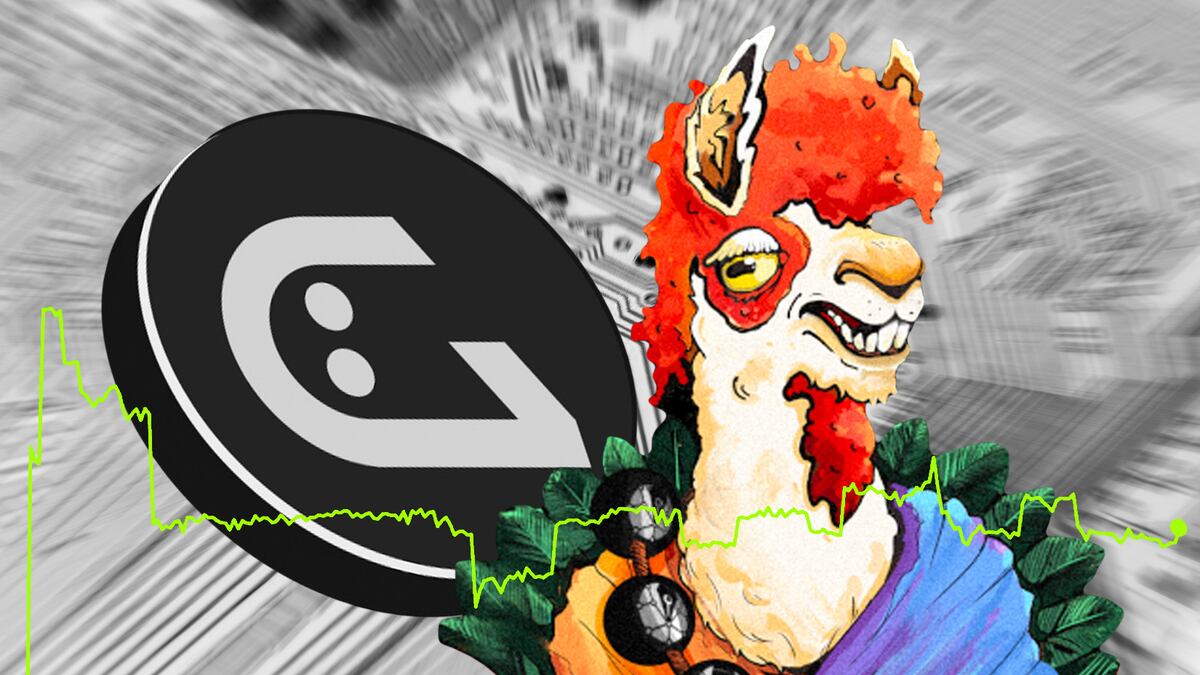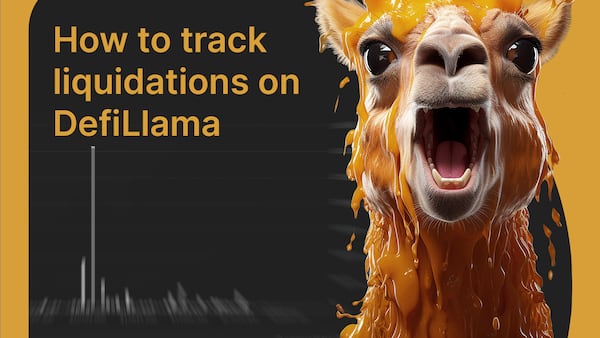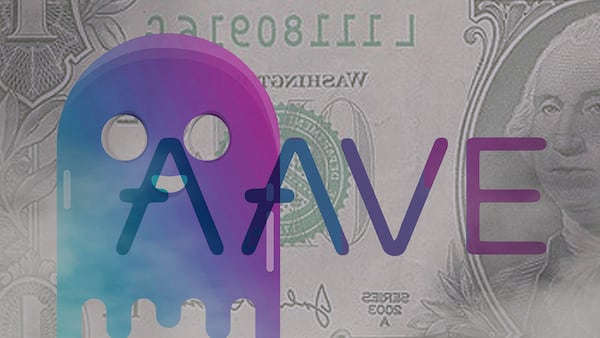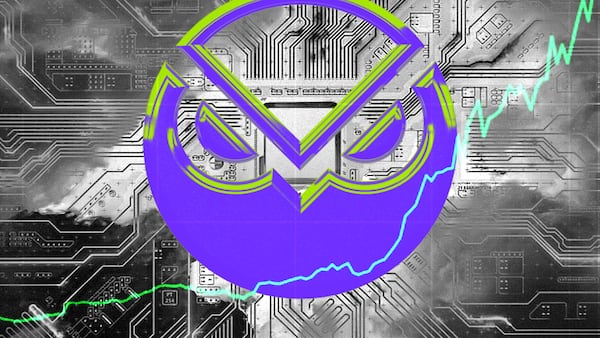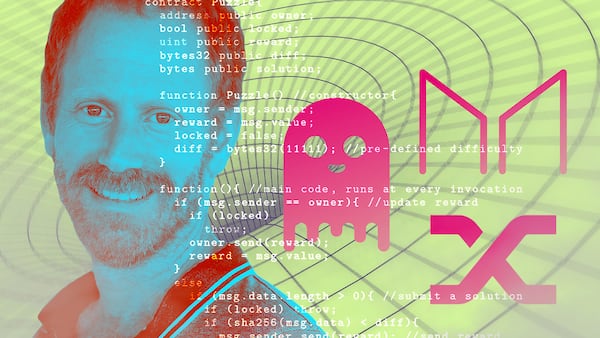- Aave’s stablecoin, GHO, has been trading below peg since its debut.
- In October, DeFi specialist TokenBrice, was elected to lead the efforts to return it to peg.
- After deploying a variety of novel initiatives, he appears to be on a path to victory.
- But there's a deadline.
A novel campaign to raise Aave’s de-pegged stablecoin, GHO, to $1 made significant progress over the past week, but was poised to fall short of an “ambitious” goal just hours before its midnight deadline.
GHO briefly hit $0.99 on Tuesday. It’s trading at $0.983 at the time of writing, just shy of the $0.985 goal set by the campaign’s “benevolent temporary dictator,” DeFi developer Brice, better known as TokenBrice.
TokenBrice previously pledged to offer to resign from his position if GHO does not reach $0.985 by the end of the month. If it is trading below that price come midnight central European time, a committee will decide whether to accept TokenBrice’s resignation or to ask him to continue his efforts, with a new, end-of-year goal of $1.
“If the objective is met, then there is simply no vote, and [I] keep going for another month and [for] the second target, which is GHO at $1 before 2024,” TokenBrice told DL News.
If the objective isn’t met, then TokenBrice will offer his resignation, but GHO’s seven-member liquidity committee will still have to vote on it.
Stablecoin and its peg
A month into the campaign, TokenBrice and another member of the committee, longtime Aave contributor Marc Zeller, told DL News it was working, but that the effort to re-peg GHO was only getting started.
“It’s the first time ever in the history of DeFi where directional liquidity strategies are used in concordance with other initiatives” — which include upcoming upgrades to GHO itself — “to repeg an asset,” TokenBrice told DL News.
Stablecoins are cryptocurrencies pegged to other assets, most often US dollars. They are meant to offer crypto investors and traders refuge from the sector’s volatility while allowing them to keep their assets on the blockchain.
They aren’t perfect, however. Stablecoins can deviate from their peg, most famously when multibillion dollar Terra USD fell to near zero in the spring of 2022, plunging the industry into its latest “crypto winter.”
GHO was one of the most anticipated stablecoins to launch this year, along with crvUSD, which is backed by DeFi titan Curve, and PayPal’s PYUSD.
But GHO has been trading below its $1 peg almost since the day it launched this past summer, in part because it launched without a mechanism that would allow holders to redeem the token for $1 regardless of its market price.
Developers are now working on redemption mechanism, which could launch within two weeks, according to Zeller.
GHO was trading just above $0.96 in October, when GHO’s liquidity committee elected TokenBrice to lead the effort to bring it to peg.
Those efforts include doling out incentives on three protocols — Maverick, Bunni and Uniswap — for people who provide liquidity to pools in which one can trade GHO against a trio of other stablecoins: USDC, USDT, and LUSD.
“At a high level it’s liquidity mining,” TokenBrice said, referring to the practice in decentralised finance of attracting liquidity to certain token pairs by doling out rewards to traders who loan desired tokens to trading pools.
“The way it’s usually done is untargeted,” he continued. “Here, it’s a very precise liquidity shape that is biased toward the buyer side.”
The myriad incentives have successfully driven buy pressure for GHO, “pushing the repeg,” TokenBrice wrote in a report published November 23.
But it became clear “that liquidity strategy alone won’t be sufficient to sustainably repeg GHO,” he wrote. “Indeed, restoring and maintaining GHO’s peg purely through liquidity strategy would be highly costly.”
Meanwhile, the Aave DAO, the digital cooperative that governs Aave, has voted to increase the cost of borrowing GHO from 1.5% to 4.72%.
Although GHO fell at the beginning of the campaign, reaching a low of $0.955, it has grown since in fits and starts.
“I think without all the coordinated efforts of GLC & DAO the probability of GHO peg would be zero,” Zeller told DL News, referring to the committee and the Aave DAO.
Aave is the second-largest DeFi protocol on Ethereum, and allows users to lend and borrow crypto assets. It had more than $8.7 billion in user deposits as of Wednesday.
GHO is minted when Aave users borrow it against crypto collateral worth more than the GHO being borrowed.
As of Tuesday, there were almost 35 million GHO tokens in circulation, backed by more than $70 million worth of crypto.
Liquidity challenges
One challenge in improving liquidity around GHO remains: a large pool on decentralised exchange Balancer in which one can trade GHO against USDC and USDT.
“It acts as an essentially selling reserve of GHO as GHO price goes upward,” TokenBrice said.
Despite the efforts of TokenBrice and the committee, the biggest boost may have come from something outside the committee’s scope: a proposal to use GHO in Aave’s “safety module,” a vault of locked-away tokens that are distributed to users in the event the protocol suffers a shortfall.
That would make the stablecoin more attractive to would-be buyers, by giving them a way to earn yield on their GHO holdings.
Users who lock up, or “stake,” their GHO would earn 12% to 15% yield on the staked GHO, according to the proposal, authored by Zeller.
That, in addition to the fact that GHO can only be purchased on secondary markets at the moment — it recently hit a 35 million cap — may have contributed to its sharp jump Tuesday, according to Zeller.
“As you can’t mint GHO, smart money realised they can both get repeg money + a slot in [staked GHO] for 12-15% yield,” Zeller said. “As StkGHO recently entered governance pipeline, I think it was the spark among many factors.”
TokenBrice agreed.
“There was definitely some form of excitement and FOMO — there were large buys that pushed the price, and more people jumping in on the GHO long trade,” he told DL News.
“What matters most is that the price appreciation is so far sustained, and I think this is where the directional liquidity plays its most significant role.”
Another major solution is around the corner: the ability to redeem GHO for $1 on Aave, even when it is trading for more or less than $1 on secondary markets.
Stablecoin experts have attributed GHO’s de-peg, in part, to the fact that it couldn’t be redeemed for $1.
Redemption would allow traders to arbitrage any deviation from its peg — say, minting it for $1 and selling it for $1.01 — creating sell or buy pressure that quickly brings it back to peg.
GHO’s redemption mechanism, the “GHO stability module,” is set to debut in the next two weeks, according to Zeller.
But it will primarily benefit GHO when it is over-peg, he said. Some version of the liquidity incentives used over the past month may be necessary to make sure GHO stays there.
“Getting back to peg is only half of the journey,” Zeller said. “Staying there is as important and GHO needs to be liquid enough to maintain peg even with large buy/sells.”
Update, 20 May: Brice’s surname has been removed due to security concerns.
Aleks Gilbert is our New York-based DeFi Correspondent. Have a tip about stablecoins? Drop him a line at aleks@dlnews.com.
